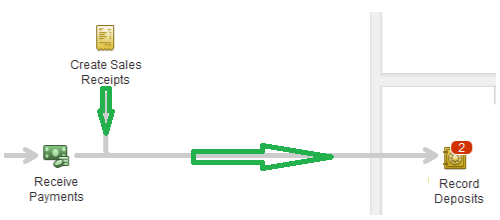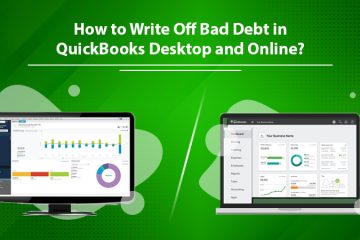How to Track Customer Transaction Workflows in QuickBooks Desktop?

There are a number of ways that you can try to track customer transaction workflows in QuickBooks desktop. We have compiled the different ways so that you won’t have to navigate a lot to get a solution. If you follow these workflows then you can organize the cash flow and track sales and other factors without any trouble.
Ways to track customer transaction workflows in QuickBooks Desktop
Workflow 1: Invoice-payment-deposit
If the user has given a product or a service and the customer wishes to pay later then this transaction workflow should be kept in mind. Once the customer has paid, the user can record the payment in QuickBooks to close the client’s invoice or reduce the balance. You can follow the steps mentioned below:

- The user should create an invoice initially
- Record the invoice payment
- Deposit the customer’s payment
Workflow 2: Sales receipt – Deposit
This is paid if the customer pays on the spot for a specific product or service. The process for this customer transaction workflow will be:

- You need to create a sales receipt initially
- Deposit the customer’s payment directly
Workflow 3: Estimate-sales order- invoice- payment- deposit
This is followed if a person wants to complete a project but it is not necessary for the user to have complete material with them. The user can generate a sales order from the reference so the user gets to track the items on the back order.
After that, the user can generate an invoice from the estimate upon the completion of the project. You should know that this feature is only there in the premier and enterprise versions of QuickBooks.

- The user should create and send the project approximate to the client
- Create a sales order from the estimate
- Once that is done, the user can create an invoice from the sales order
- Record the invoice payment
- Deposit the customer’s payment
Workflow 4: Statement charges- finance charges- statement payment- deposit
This is for those who frequently charge the clients but they invoice it periodically. The user can omit the creation of an invoice for every charge and the customer can pay the accrued charges all together. The steps would be like to track the customer transaction workflow:

- The user should create the customer’s statement charges
- Assess these finance charges
- Create and send the statement to the customer
- Record the payment received and then deposit the customer’s payment
Workflow 5: Estimate-invoice-payment-deposit
This could also be termed as progress invoicing that can be followed if the user works on jobs or projects for the customers. The estimate can be used for tracking the materials, additional expenses as well as labor that goes in the project. The invoice is generated once the work is done.

Workflow 6: Sales order- invoice-payment-deposit
The user will be required to follow this if the customer orders something that is out of stock at that time. This is a way in which the user will know that the products are still needed to be purchased from vendors. The user can finish the customer’s order timely. It is mandatory to be noted that the sales order function is available in the premier and enterprise edition of QuickBooks.

- Firstly, the user should create a sales order for the items or backorder
- Create an invoice from the sales order
- Record the invoice payment and then deposit the customer’s payment
Related Blog: Fix ‘No New Transactions Available” When Importing QBO File‘
Conclusion
We hope that you will be able to track customer transaction workflow easily now. If you get stuck anywhere then all you need to do is get in touch with the QuickBooks Desktop Help and the experts will guide you in no time.


